Publications on Adolescents
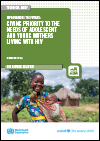
Resource | Publications,
In 2019, WHO and Coalition for Children Affected by AIDS convened a learning session of scientific and programmatic experts to consolidate the evidence on why HIV-affected adolescent mothers and their children are being left behind and to deliberate on the multiple-level changes needed to improve their outcomes. This technical brief follows on from that session and will be useful to HIV programme managers in health ministries and other adolescent- and youth-linked line ministries, especially those in in sub-Saharan Africa, in implementing, monitoring and evaluating adolescent and youth-responsive and -friendly health services for young mothers living with HIV.
This technical brief aims to inform and support global dialogue and accelerate action on prioritizing services and support for adolescent and young mothers living with HIV. It details core programmatic examples and key strategies actions from across sub Saharan Africa that demonstrate how governments, health facilities, social services, communities, families and adolescent and young mothers are working together to bridge the gap between adolescent and adult-focused HIV and maternal health services. The programme examples provided serve to highlight potential and ongoing learnings in countries.
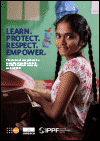
Resource | Publications,
Comprehensive Sexuality Education (CSE) is a curriculum-based process of teaching and learning about the cognitive, emotional, physical and social aspects of sexuality. It goes beyond simply providing education about reproduction, risks and diseases by also addressing positive sexuality and relationships, and the broader sociocultural and gender influences on sexual and reproductive health, with an emphasis on developing life skills. School-based age-appropriate CSE is an effective means of reaching a large population of children and young people, particularly where rates of school participation are high. This overview of the status of in-school CSE in Asia and the Pacific provides a strong evidence base on the reach and impact of this across the region.
This summary review comes with a package of five factsheets and six videos. The factsheets shed light on different aspects of school-based CSE: enabling framework, curriculum, teacher’s preparedness, monitoring and assessment, and needs of young people.

Resource | Publications,
In April 2019, WHO convened an expert scoping consultation in Geneva, Switzerland consisting of policy-makers, academics and partners from the HIV, noncommunicable diseases and mental health communities to discuss current evidence of chronic noncommunicable disease, the burden and risk among people living with HIV, review current norms and standards and ultimately to set priorities for technical areas and interventions for co-managing major non communicable diseases and mental health conditions among people living with HIV; and to inform the update of the 2016 WHO HIV consolidated guidelines on the use of antiretroviral drugs for treating and preventing HIV infection.
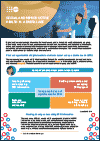
Resource | Fact Sheets,
Digital media are increasingly influencing the lives of young people. Around the world, adolescents and young people are using digital media as a platform to learn, experience, and communicate. Across Asia, and increasingly in the Pacific, young people use smartphones, tablets and computers to engage in diverse online activities, such as social networking, instant messaging/texting, and browsing websites/search engines. This connectivity creates both positive opportunities to access sexual and reproductive health information but also challenges on many fronts.
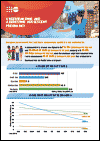
Resource | Fact Sheets,
Every year, there are over 3.7 million births to adolescent girls aged 15-19 in Asia and the Pacific. Adolescent fertility rates are now highest in the Pacific (51 births per 1,000 girls) and Southeast Asia (43 births per 1,000 girls), compared with South Asia (26 births per 1,000 girls), where there has been a significant reduction in the last two decades, and East Asia (7 births per 1,000 girls). Adolescent pregnancy has profound implications for the health and wellbeing of young people, and that of future generations. Addressing adolescent pregnancy requires a comprehensive, youth-centred, multisectoral approach to respond to the interrelated drivers of early pregnancy, and reduce associated adverse outcomes for girls and their infants. Key is the meaningful engagement of young people to understand the factors contributing to pregnancy and identify effective approaches that respond to their needs and take into account their agency.

Resource | Fact Sheets,
Throughout the Asia and Pacific region, young people with diverse sexual orientation and gender identity or expression (SOGI/E) experience a high burden of poor sexual and reproductive health (SRH), including a disproportionate burden of HIV, intimate partner violence and psychological distress. This group also often experiences considerable barriers to accessing quality health services and are largely neglected by existing adolescent health, SRH, and HIV policies and strategies in the region. A multicomponent, multisectoral approach that fully engages young people with diverse SOGI/E in design, implementation and evaluation is required to address the complex determinants and multiple vulnerabilities that contribute to their poor health outcomes.
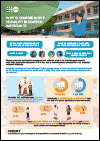
Resource | Fact Sheets,
‘My boyfriend is pressuring me to have sex, how do i say no?’
‘What is love?’
‘What does it mean if I am a girl and I find other girls attractive?’
‘What is HIV and how can I protect myself?’
These are common questions that young people are either too afraid to ask or lack the comprehensive knowledge, supportive attitudes and life skills they need to make these decisions about their lives and bodies safely and responsibly. Sexuality is a fundamental part of human life. Every young person will have to make decisions that impacts their sexual and reproductive health, and wellbeing. That is why comprehensive sexuality education is so important.
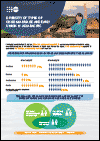
Resource | Fact Sheets,
In the Asia and Pacific region, 23 million adolescents aged 15-19 years are currently married or in union. Child marriage and early union (formal or informal, before the age of 18 years) is common throughout much of the region, with the highest prevalence in South Asia and some Pacific countries. The legal age of marriage should be 18, and all countries should enact legislation to prohibit forced marriage and remove exemptions that allow nonconsensual child marriage. However, treating all unions under the age of 18 years as forced and invalid can have harmful consequences. Enforcement of laws can cause harm to the girls we are intending to protect. Understanding the different forms of early marriage and union in the context of adolescent development and agency is critical to ensuring the implementation of child marriage legislation does not cause harm.
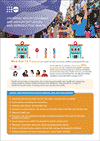
Resource | Fact Sheets,
Health services play an important role in reducing preventable poor health and supporting young people to make a healthy transition into adulthood. While many countries in Asia and the Pacific have made considerable progress towards effective coverage, and to some extent equitable coverage, of sexual and reproductive health (SRH) services, progress has not been realised for adolescents (age 10-19 years). Many national universal health coverage programmes exclude SRH services that are of particular priority and importance for adolescents. As a result, young people (age 15-24 years) continue to have a high unmet need for essential SRH services and coverage is particularly low among rural, less educated, poorer, and marginalised young people. This factsheet summarizes key recommendations to improve the inclusion of adolescents and young people in universal health coverage.





